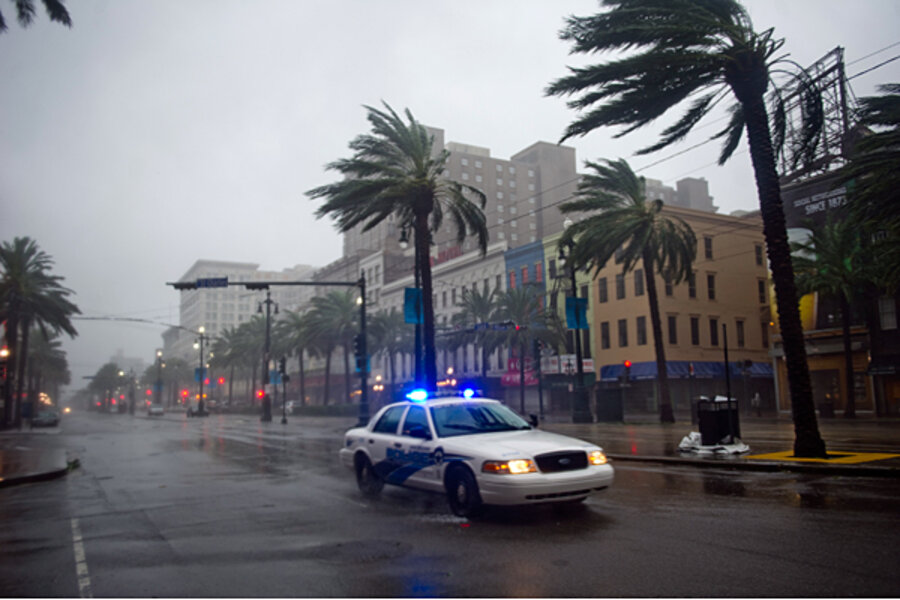Hurricane Isaac: New Orleans withstanding storm with levees – and levity
Loading...
| New Orleans
The seventh anniversary of hurricane Katrina dawned Wednesday to find New Orleans and the rest of southeastern Louisiana once again swept by hurricane winds, raked by heavy rain, and coastal areas swamped by storm surge.
This time, hurricane Isaac is the culprit. Its large size and slow pace continue to hold the region hostage to heavy flooding and are expected to do so throughout the rest of the week.
With wry hurricane humor, New Orleans Mayor Mitch Landrieu said in a radio interview Wednesday morning that Isaac "has no personality, no sense of humor. It's just rude."
But for New Orleans in particular, the effects so far are markedly different than seven years ago. The storm's path to the west of the city and its status as a low-end hurricane, with maximum sustained winds now at 75 miles an hour have played a key role, although emergency officials remain wary of Isaac's continued high rainfall rates and lethargic pace.
But Mayor Landrieu also credits efforts the US Army Corps of Engineers has made to upgrade the city's flood defenses since Katrina. More work remains to be done on the nearly $15 billion project. But so far, "the federal levee system is working just fine," as are the city's complement of flood-control pumps.
In Plaquemines Parish, however, floodwaters have risen behind a section of Mississippi River levee 8 miles southeast of downtown New Orleans, sending some residents into attics to escape the rising water and others onto a ferry landing that extends from the levee top.
Louisiana State National Guard troops reportedly are making an initial attempt to rescue people trapped, with additional efforts coming after winds die down. In the meantime, Billy Nungesser, the Plaquemines Parish president, reportedly has ordered mandatory evacuations for residents living along a 54 mile stretch of the Mississippi River that falls within the parish.
At 10:00 a.m. Central Daylight Time, Isaac's center was located over Houma, La., about 45 miles southwest of new Orleans. By this evening, the storm is expected to weaken to a tropical storm and become a tropical depression by Thursday night.
Some coastal areas are still experiencing storm surges of between 6 and 8 feet. And brief tornado warmings continue to pop up inside the storm's northeast quarter. By 7 a.m. Central Daylight Time Wednesday, New Orleans had received from 3 inches to 9 inches of rain, depending on the location, according to preliminary data from the National Weather Service.
So far, New Orleans has experienced widespread power failures, downed trees, one house fire, and some street flooding. Some 550,000 customers throughout the state are without electricity, according to Entergy New Orleans Inc., which provides it. About half of those customers are in Orleans and Jefferson Parishes, which encompass New Orleans and most of its suburbs.
Spokesmen say crews will hit the streets to repair downed lines as soon as sustained winds drop below 30 to 35 miles an hour – the safety limit for the bucket trucks the crews use.








